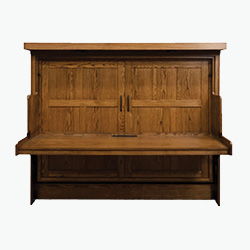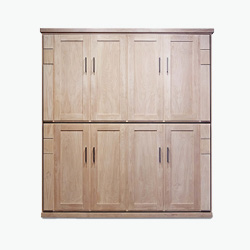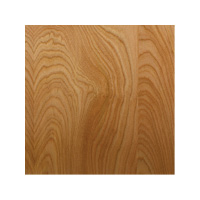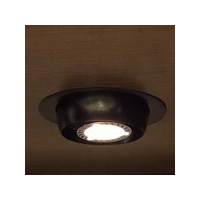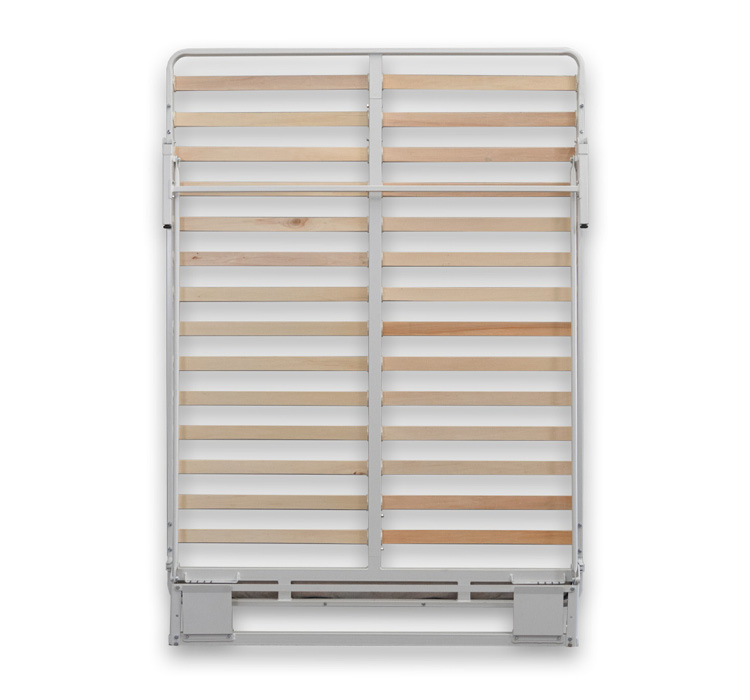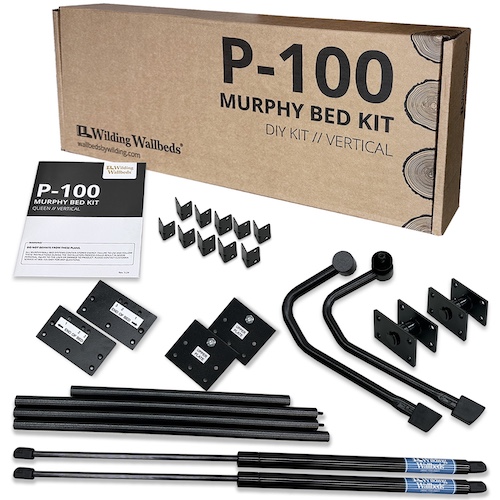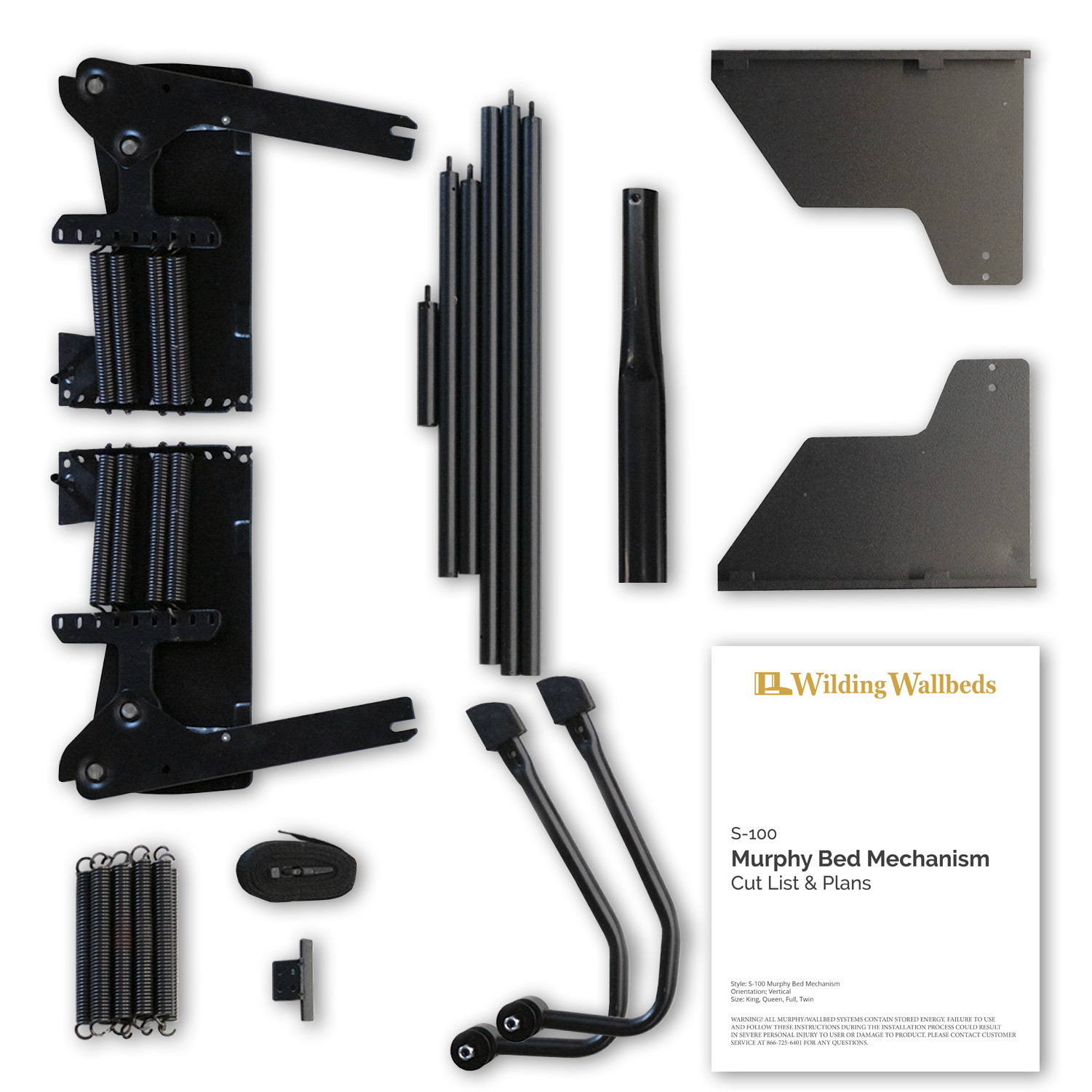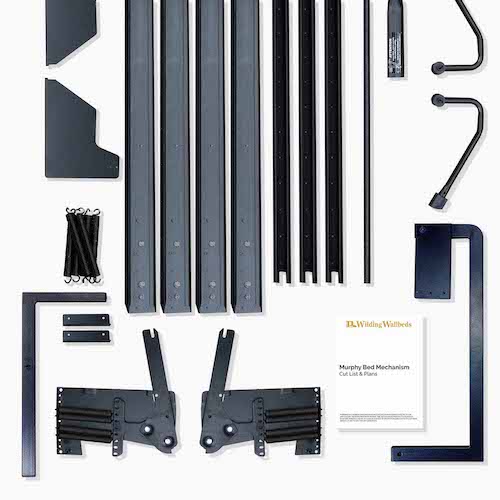Ultimate Bed Care Guide

We’ve all heard it before: “you spend 1/3 of your life in bed, so invest in a good mattress.” And we at Wilding Wallbeds wholeheartedly agree. After all, we are in the bed and mattress industry! A good quality mattress will provide years of restful comfort and help you to wake in the morning rejuvenated and refreshed. So, make sure you’re protecting your investment by keeping your new bed clean and maintained. If you do, your new bed will continue to provide a good night’s sleep for years to come.
Once you have made the plunge and invested in a great bed, you need to think beyond the wonderful sleep you’re going to be experiencing. Because you will be spending a significant part of your life laying in it, it is essential that you keep it clean and maintained. Remember, we all sweat and shed dead skin cells when we sleep. Sometimes, there are accidents that happen. So, simply changing your sheets regularly is not enough. Just like your laundry, the furniture, and carpets in your home, your bed is also in need of regular cleaning and maintenance. In this post, we will describe how to properly clean your mattress and more. If you have any questions at all, do not hesitate to contact us. We will be happy to assist you and provide you with the information you need to keep things clean and tidy.
So, where do we begin? Well, let’s start with the bedding itself. After all, you will need to remove your sheets, comforters, blankets, pillows and covers before you begin on the mattress, so that is as good as any place to start.
How to clean your sheets, comforters, pillows and pillowcases
 Depending on the types of sheets you cover your mattress with, there will be special laundering instructions you should be aware of. Most sheet sets come with cleaning instructions and it would be wise to follow those instructions. But who holds onto those instructions after they have made their bed for the first time? We don’t. So, because of this, take the following instructions with a grain of salt. These are generalized based off of what we Googled so be sure to do your own research before you throw your $1,100 Mulberry silk sheets into the front load washing machine you got from Sears.
Depending on the types of sheets you cover your mattress with, there will be special laundering instructions you should be aware of. Most sheet sets come with cleaning instructions and it would be wise to follow those instructions. But who holds onto those instructions after they have made their bed for the first time? We don’t. So, because of this, take the following instructions with a grain of salt. These are generalized based off of what we Googled so be sure to do your own research before you throw your $1,100 Mulberry silk sheets into the front load washing machine you got from Sears.
Sheets and Pillowcase Care
- Cotton Sheets and Pillowcases – Cotton sheets and pillow should be laundered at least once a week and more often if needed. Wash your sheets and pillowcases in their own load, if possible. Avoid washing your sheets and pillowcases with moldy dish rags, oily rags and towels, or heavily soiled clothing. Most cotton sheets and pillowcases can be washed at any temperature but you should consult the manufacturer if you are unsure. Use a good quality, color-fast detergent. Pro tip – wash at high temperatures to help reduce the amount of allergens present. If you have dark colored sheets and pillows, wash and rinse in cool water to keep them from fading. Dry cotton sheets and pillow cases at medium to low temps to keep them from wearing out prematurely.
- Silk Sheets and Pillowcases – well, well, well… silk sheets, huh? You certainly know luxury! High quality silk sheets are often expensive and thus require a bit more care when laundering them. First of all, these are not cotton so don’t treat them like cotton. It is recommended that you hand wash high quality silk sheets and pillows the first few times and wash them overall about once per week. Doing so will help to condition the fibers for subsequent wasings. Use only lukewarm water and a high quality detergent specifically designed for silk sheets and pillowcases. The Laundress makes a great product for silk linens. Don’t vigorously scrub your silk sheets? Doing so will damage the fibers resulting in a rough texture, exactly the opposite of luxurious! Also, don’t just wring them out – wrap them in a towel before twisting the water out of them. When you begin washing them in your washing machine, always use the “delicate” setting if available. Do not wash in hot water, preferably keeping the temp below 85 degrees (F). Also, wash silk sheets and pillowcases by themselves and let them go through only one rinse and spin cycle. When it comes to drying, using a clothes line is best. However, if you must use a dryer, only dry at the lowest temp possible. Finally, silk sheets and pillowcases need to be ironed if you wish to keep them looking crisp and wrinkle free, though this is not necessary.
- Satin Sheets and Pillowcases – If you are one of the few people who actually enjoy satin sheets and pillowcases, good on you. Personally, we find satin to be somewhat… uncomfortable. But, to each their own. Just like silk, satin requires more attention than cotton does and should be washed about once per week. Satin sheets and pillowcases should be hand washed in lukewarm water using a gentle fabric detergent. Be aware that wet satin can tear quite easily, so take it easy and be gentle. Wring them out while wrapped in a towel. Dry your satin sheets and pillowcases on a clothes line or dry in your dryer on the lowest setting possible.
Pillow Care
- Martha Stewart recommends that you wash your pillows at least two times per year. If you are an excessive drooler (sorry for the visual), it may be necessary to wash your pillows more often. You know, for sanitary reasons. Down pillows and synthetic material pillows are machine washable in most cases. As always, refer to the tag attached to your pillows for care instructions (assuming you haven’t cut them off). Try to use liquid detergent as powders can leave behind residues. It’s okay to wash your pillows with your other laundry but be sure to keep the pillows balanced in the bid to avoid off balanced loads. When drying pillows in the dryer, be sure that they are completely dry before returning them to service. Down and feather pillows can mold if moisture is present. Dry all pillows on low heat.
 Blanket and Comforter Care
Blanket and Comforter Care
- Wool Blankets – Wool blankets should be shaken and brushed to remove dirt, pet hair, and dead skin cells regularly to keep them soft and presentable. Sometimes, wool blankets will develop “pills,” small balls of bunched up wool fibers. Use a fabric shaver to remove them. When it is time to wash, it is best to get them dry cleaned because washing them in a washing machine will most likely lead to shrinkage. Dry cleaning also kills moth larva that may be present (gross, we know. But it can happen). When storing wool blankets, place tissue paper between the folds to reduce wrinkles. Vacuum seal them for long term storage.
- Cotton Blankets – cotton blankets should be washed on a warm or low temperature cycle to help keep colors from fading. If needed, use a spot-treatment to pre-treat excessively stained blankets. Use a mild liquid detergent where possible. Tumble dry on a warm drying cycle. See? Pretty easy!
- Down Blankets – you should shake your down blankets out weekly so as to prevent the feathers inside from bunching up. When possible, have a professional launder clean your down blanket and comforters. However, should you choose to clean them at home, machine wash them in cold water using a mild detergent without additives. Choose the fastest and longest spin cycle to ensure as much moisture is removed as possible. Avoid fabric softeners because it can leave a coating on the feathers and reduce the “fluff.” Dry on medium heat.
- Fleece Blankets – Lower quality fleece will “pill” so it is recommend that you use a fabric shaver to remove them. Regardless of the quality of the fleece, washing fleece involves using a mild laundry detergent in cold water on the delicate cycle. Add fabric softener during the rinse cycle. Hang the fleece blanket to air dry as dryers often result in “pilling.”
How To Clean Your Mattress and Box Spring
 Obviously, you won’t be able to stuff your mattress and box spring into your front loader. However, just like your bedding, your mattress and box spring need regular cleaning to remove stains, skin cell build up, pet hair, and other common contaminants. There are two instances when mattresses need to be cleaned – when stains happen (spills, bed wetting, accidents, etc.) and regular maintenance. Box springs don’t typically need to be cleaned as often as your mattress unless something truly messy happens. Clean box springs the same way you’d clean a mattress.
Obviously, you won’t be able to stuff your mattress and box spring into your front loader. However, just like your bedding, your mattress and box spring need regular cleaning to remove stains, skin cell build up, pet hair, and other common contaminants. There are two instances when mattresses need to be cleaned – when stains happen (spills, bed wetting, accidents, etc.) and regular maintenance. Box springs don’t typically need to be cleaned as often as your mattress unless something truly messy happens. Clean box springs the same way you’d clean a mattress.
The first thing we’ll cover is immediate stain and accident treatment. When it comes to cleaning up stains, spills, and other accidents, the faster you properly clean it, the less chance the stain will set and in the case of bodily fluid stains, the less chance of odors developing.
Protein-Based Stains
These are the stains that come from the body i.e. blood, sweat, urine, etc. Because these stains contain proteins, they will eventually develop an odor because of bacterial growth. Treating them as soon as possible will mitigate the bacterial growth thus heading odors off at the pass. There are products available that are specially formulated for protein-based stains which can do a pretty good job. However, you may have products in your cupboards that will perform just as well. Try this the next time an accident happens in bed:
- Soak the stained area in COLD water. Hot water can actually help to pronounce odors so make sure you soak the area in cold water.
- Mix together equal parts water, hydrogen peroxide, and baking soda.
- Use a soft bristled scrub brush and work the mixture into the stain. Depending on the severity of the stain, multiple treatments may be necessary.
- Pat dry the area with a clean towel and then let air dry. A box fan pointed at the cleaned area can help to speed up the drying time.
Food, Drink, and Other Stains
 Munching on snacks while watching Netflix can help to facilitate unintentional spills and messes on your mattress. As with all other stains, the faster you treat them, the less of a chance they’ll set and become permanent. Here are a few of the most common types of food and drink stains and how to treat them.
Munching on snacks while watching Netflix can help to facilitate unintentional spills and messes on your mattress. As with all other stains, the faster you treat them, the less of a chance they’ll set and become permanent. Here are a few of the most common types of food and drink stains and how to treat them.
Red Wine
- Using clean paper towels, dab up as much excess wine as possible. DO NOT RUB IT!
- Apply a solution of club soda and salt to the stain, let soak, and then blot dry.
- If further treatment is needed, use a 3:1 mixture of hydrogen peroxide and dishwashing soap, respectively. Let soak into the stained area and then blot dry.
Coffee
- Use clean paper towels to dab up all excess coffee. Avoid rubbing it into the mattress.
- Mix together one tablespoon of liquid dish soap and two cups of cold water.
- Use a clean cloth to “sponge” the stain with this mixture.
- Finish with more cool water on the stain, blotting up excess water and the remaining coffee.
- Repeat as necessary.
Chocolate
- Remove excess chocolate from the mattress.
- Mix together two cups of cold water and 2 tablespoons of dish detergent.
- Use a clean cloth to blot the cleaning mixture into the stain. Continue blotting until the stain wears away.
- Use a clean cloth to blot away the cleaning mixture and allow to air dry.
- Repeat if necessary.
Grape Jelly
- Soak the grape jelly stain with cool water.
- Mix together 1 tablespoon of white vinegar with ½ of a teaspoon of liquid laundry detergent in 1 quart of warm water. Soak the stain with this solution for at least 15 minutes.
- Rinse the cleaning solution away with water and use a clean cloth or towel to blot dry.
- Repeat as necessary.
Paint
- For watercolor paint, use cotton balls and rubbing alcohol to blot the stain. Be sure to use a new cotton ball often to avoid re-staining the area. Repeat as necessary.
- Oil based paints can be tougher to remove. Remove all excess paint as soon as possible. Depending on the type of paint being cleaned, it may be necessary to use a thinning agent such as odorless turpenoid or turpentine. CAUTION! Always be sure to test the thinner out on an inconspicuous area before you begin. Some of these chemicals can damage the material your mattress is constructed of. Follow all directions as written.
- Acrylic paints are easier to remove than oil based paints and may only require using common fingernail polish remover, rubbing alcohol, or even alcohol based hair spray to clean it up. Blot the stain with one of these products and let it soak in., Then, blot away the cleaner and paint stain with a clean cloth. Repeat as necessary.
Ectoplasm
- Wear gloves. Coming into contact with ectoplasm affects people in uncertain ways. Some people go mad. Some people win the lottery. And some people get elected President of the United States. So make sure to wear a sturdy set of gloves because it’s just not worth the risk.
- Consider hiring an Exorcist. You never know exactly what kind of apparition left the gooey stuff behind. Most poltergeists are harmless but some are known to cause havoc.
- Tobin’s Spirit Guide suggests mixing essence of garlic, colloidal silver, sage, sacrificial pig blood, OxiClean (especially effective if you’re being haunted by the ghost of Billy Mays), 2 drops of Felis Felicis, and hydrogen peroxide. You may need to experiment with the mixture depending on whether or not the ectoplasm is green, purple, or clear in color. Cover the stain with the anti-ectoplasm mixture and see what happens.
- Use a clean cloth and dab dry. Burn soiled rags in a hollow pit under the light of a blue moon.
General Mattress Cleaning and Maintenance
 Caring for your mattress really consists of turning/flipping it at regular intervals and light cleaning.
Caring for your mattress really consists of turning/flipping it at regular intervals and light cleaning.
When you strip your mattress to launder sheets and blankets, use your vacuum to go over the surface to remove dead skin cells, crumbs, lint, and hair.
Most mattresses are constructed of metal coils and a wire frame sandwiched between the padding and cover. Over time, these metal coils will bend and wear out, especially if you sleep on the same area night after night. Because of this, mattresses have the tendency to sag and lose form resulting in uncomfortable rest.
To help keep your mattress in good shape (literally), it is recommended that you flip the mattress once per year and rotate the mattress one per year. According to some mattress makers, flipping and rotating your mattress can extend its life by almost 7 years.
How To Flip Your Mattress
Flipping your mattress is simple. Have somebody help you if you have a queen or king size mattress as these mattresses can be heavy. Simply flip the mattress over so that the bottom is now the top. Flip from the side or the foot of the bed – it makes no difference. Do this on January 1st of each year (or whenever you want. January 1st is just easy to remember i.e. when the calendar year flips, so should your mattress).
How To Rotate Your Mattress
 The second yearly mattress maintenance item to complete is to rotate it. Rotating your mattress re-positions the springs so that you are sleeping on a different set of twice per year which makes them wear at a lower rate. To properly rotate a mattress, simply spin it around so that where your head once rested is now where your feet rest. In other words, if the place where your pillows goes is 12:00, move that place to 6:00. If you have a queen or king size bed, it may be necessary to get some help. As a reminder, set July 1st as your rotate date – the day of the year when the earth’s rotation around the sun is halfway complete. Or something like that…
The second yearly mattress maintenance item to complete is to rotate it. Rotating your mattress re-positions the springs so that you are sleeping on a different set of twice per year which makes them wear at a lower rate. To properly rotate a mattress, simply spin it around so that where your head once rested is now where your feet rest. In other words, if the place where your pillows goes is 12:00, move that place to 6:00. If you have a queen or king size bed, it may be necessary to get some help. As a reminder, set July 1st as your rotate date – the day of the year when the earth’s rotation around the sun is halfway complete. Or something like that…
Bed Care – Because We Care
We at Wilding Wallbeds want you to get the most out of your bed and that’s why we put this guide together. Your bed should provide years of lasting comfort and with proper maintenance, it will. Bookmark this guide. Share it with your friends and family. After all, with as much time as you spend in it, your bed should be a place of comfort and solace. If you take care of your bed, it will take care of you.
For additional bed care information, be sure to call us at any one of our showrooms and we’ll be happy to assist you with your bed care questions and concerns.
Happy sleeping!

